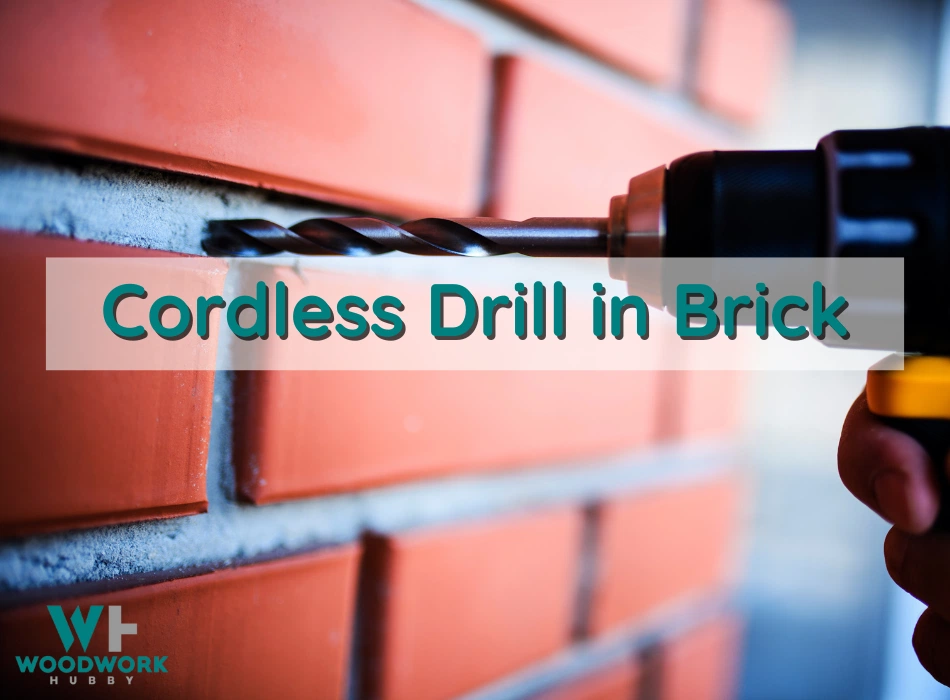A few months ago I had just finished making an outdoor shoe rack and I needed to hang it on the bricks outside in my alfresco area. I started gathering together the tools that I needed and my first thought was can a cordless drill go through brick?
Generally, a cordless drill can drill through bricks, concrete, and mortar with a good-quality masonry drill bit. All cordless drills of recent times have sufficient power and torque to do the job. I cordless drill with a hammer setting is preferred on harder materials such as concrete.
Even though I knew a cordless drill would do the job, I was still left wondering if I should opt for the corded hammer drill. I decided to do a bit of research and the below information is what I found to be most useful.
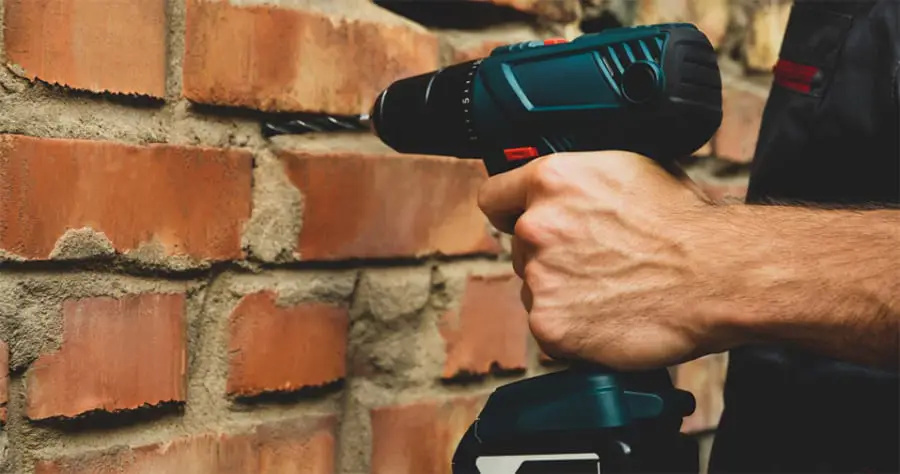
Things To Consider First up
Before you go grabbing your drill straight-up and running off to make your bricks into swiss cheese, let’s first consider some of the things that will affect how well you can drill into brick or concrete.
- The hardness of the material being drilled
- The battery power of the drill
- Best Torque setting for my drill
- Type of drill bits needed
- Do I need a hammer setting? What is it?
The Hardness Of The Material Being Drilled
While I have said nearly all cordless drills these days will drill bricks or concrete, it may be beneficial to understand what you are going to drill into and just how hard is it?
Knowing how hard the material is, will help you determine what size cordless drill you will need and if the hammer setting is required. I will explain what the hammer setting is further on in this article.
I have created a small table below to help you determine what you need to use for which kind of material you are drilling into.
Bricks
Bricks are clay-based products that do come in varying hardness levels. Soft bricks are very soft while others are quite hard. The good thing about drilling into brick walls is you can always opt to drill into the mortar which will be much softer.
Concrete
Concrete will generally be much harder than bricks and will require a little more effort to drill into. Keep in mind that new concrete will be quite soft while older concrete will be much harder.
You can learn more about how concrete hardness is calculated on this page.
| Type of Material | Battery Size | Hammer Needed? |
| Mortar between bricks | 12 Volt with 1.8 Amp hour battery | No |
| Bricks | 12-18 Volt with 2.0 Amp hour battery | Sometimes |
| New Concrete | 18 Volt with 2.5 Amp hour battery | Yes |
| Old Concrete | 18 Volt minimum with 3.0 Amp hour battery | Yes |
| Concrete Blocks | 18 Volt minimum | Yes |
Please keep in mind, that the above battery size is to be used as a rough guide only. You may be able to use a smaller battery in some cases.
Battery Power Of A Cordless Drill
The battery in any cordless drill is what does the hard work. Drilling into bricks and concrete can be hard going and will drain a small-sized battery very quickly.
For this reason, it is first important to understand what the difference is between voltage and amp-hours and which is best for you to use.
More voltage usually means higher RPM. The higher the voltage the faster your drill will spin. The more amp-hours a battery has, the more torque it will have.
So for example, if you wanted a drill for just driving in small screws, a higher voltage might be best for you. If you wanted to drill large diameter holes in hard materials, a higher amp-hour would be more beneficial.
I have put together this small collection of the cordless drills I use and would consider the best to use when drilling into bricks or concrete.
What Is The Best Torque Setting For My Cordless Drill?
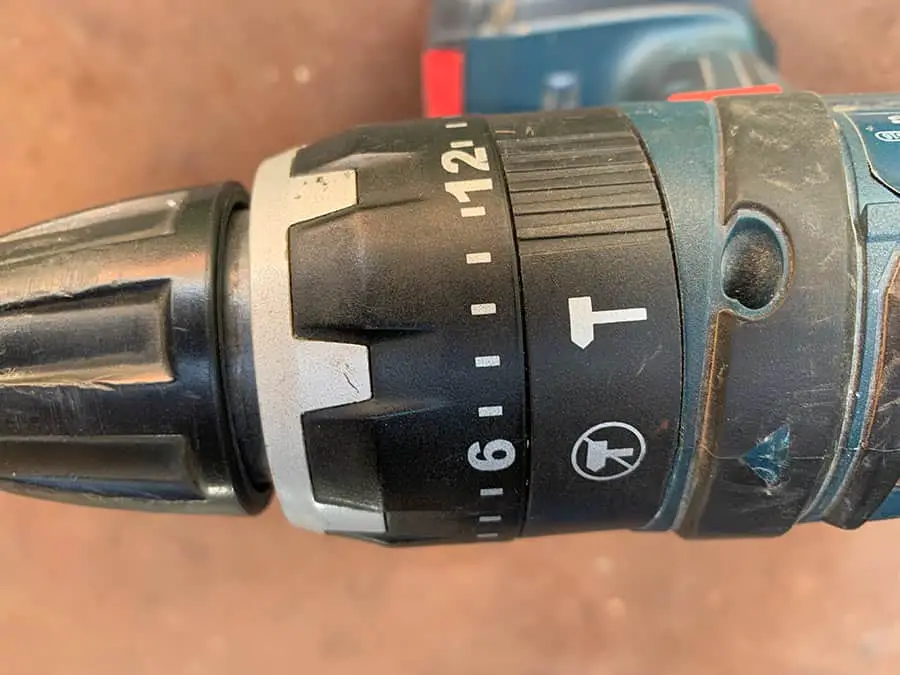
These torque settings are more commonly referred to as clutch settings. The numbers on the turnable ring indicate when the clutch will slip at the desired torque level.
As mentioned above, a cordless drill gets its torque from the amp-hour rating on the battery.
The best setting for driving in screws is low to prevent overdriving or stripping of the screw. For drilling holes and any masonry work, use the highest torque or clutch setting which is indicated by a drill symbol on the adjustable ring.
When drilling into brick or concrete you are going to need power and that power comes from the battery’s torque or amp-hour rating. If a torque setting is too low when drilling in brick or concrete, the clutch will keep slipping. For drilling any holes in any material, I always recommend using the highest setting which is the drill bit symbol.
Clutch settings vary from 1-12 generally but some larger drills may use 1-20. The lower the number the lower the torque setting. Simply turn the ring until the small arrow points to the number you need.
While you start to drill, if there is too much resistance, the clutch will disengage the motor and you may hear a funny sound. Don’t be alarmed as this is normal.
Simply turn the ring to a higher number until the drill can perform the task without the clutch slipping.
Dewalt Drill Torque Settings
A Dewalt cordless drill has a similar torque setting to most other drills. Try to use the highest settings and ensure to use the hammer function for the best results.
Best Way To Drill Through Brick
You will need the following to drill through bricks successfully:
- Good quality cordless drill with a high torque setting
- Good quality masonry drill bits
- Use the hammer setting for faster drilling
Types Of Drill Bits Needed For Drilling Brick or Concrete
When drilling any hard surfaces like bricks, mortar, or concrete, you always need to use a masonry drill bit. These drill bits are different from a normal twist drill.
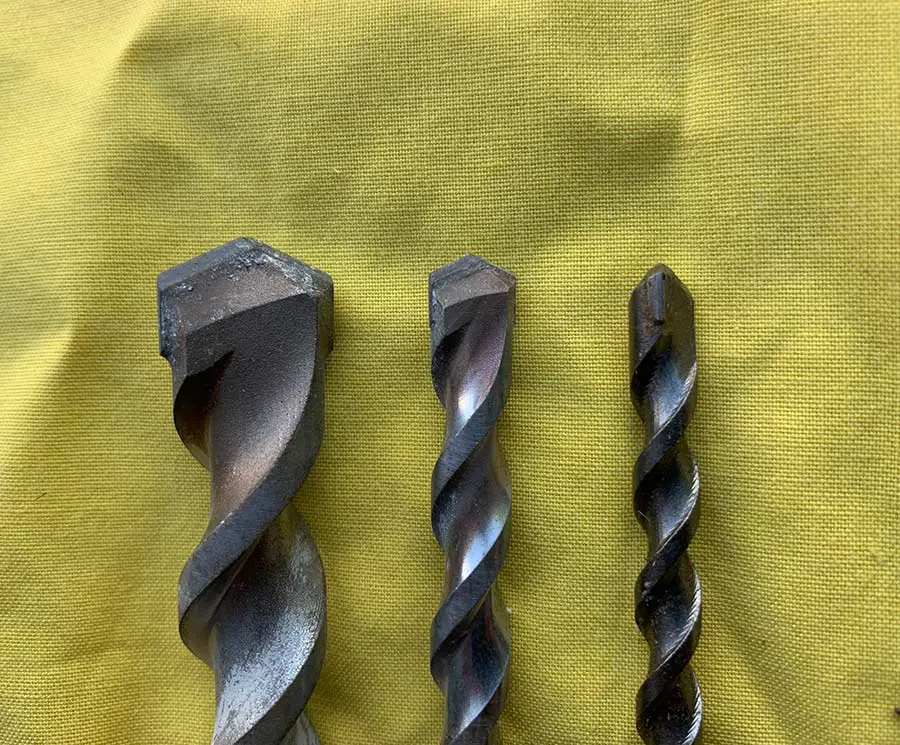
While they still have a twist section, the drill bit has a tungsten carbide tip which is broad and flat, and very durable. These tips do come in a few different shapes. The shaft is usually made from a softer type of steel. The hard tip is slightly wider than the outer diameter of the twist section or shaft.
Masonry drill bits work by the tip grinding out the material and the spirals in the shaft remove the debris. This style of drill bits prevents overheating and burning of the drill tip.
Drill Bit For Brick Wall
If you are using a cordless drill, a standard masonry drill bit will work on most hard surfaces. Extremely hard surfaces like concrete usually require a slightly different masonry drill bit that has an SDS fitting on the end. This allows for fitting into a specialty hammer drill.
Never buy cheap masonry drills. The photo below shows what a masonry drill bit looks like.
These are the masonry drill bits I use.
You can buy masonry drill bits in sets as it’s handy to have a few different sizes available depending on the screw you are using. Refer to this article on the perfect size pilot hole for any screw.
Do I Need A Hammer Setting And What Is It?
Throughout most of this article, I have said that bricks and concrete can be drilled with a normal cordless drill and the right drill bit mentioned above.
More often than not, you will find that most bricks and concrete are extremely hard and will take a long time to drill a hole without the hammer setting. My table above shows this.
So what is hammer? The hammer setting on a drill allows it to make many concussive blows behind the drill bit which will drill the hole much faster. I guess it is like hitting the back of the drill bit with a small hammer while it spins.
This hammer action is measured in BPS which is bumps per second. Most cordless drills have lower BPS than a designated hammer drill.
This hammer action causes a lot of vibration which makes the grinding away of the material happen much faster than simply spinning. You could drill holes without it but it would take you a long time.
Cordless drills such as these that I use, are commonly referred to as “Combi Drills”.
First, check to see if your cordless drill has the hammer function. It will be marked by a small hammer symbol on the adjustable clutch ring. Simply turn the clutch ring around until the arrow lines up with the hammer and you are set.

Tough Jobs Need A Rotary Hammer
If you have very large holes to drill in concrete or you want to drill these holes quicker, a rotary hammer drill is the best tool for this job.
A rotary hammer is only available on designated hammer drills and is only available in special cordless drills.
Some of these rotary hammer drills also use a special connection that is known as SDS chucks and drill bits. SDS stands for Slotted Drive System. These drills are electric and the chuck and bit work together to produce much faster drilling.
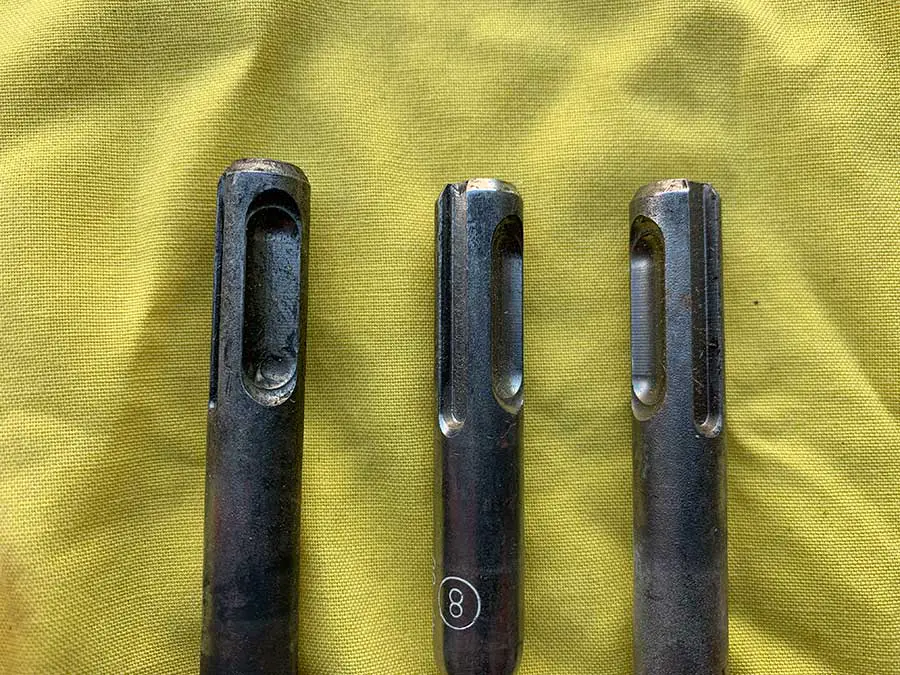
These really are the best tools to drill holes in brick or concrete. You can effortlessly drill holes in a few seconds.
A normal hammer drill allows the chuck to move forward and backward which is common in cordless drills. An SDS drill and chuck move via a mechanism inside the chuck which is why SDS drill bits are a loose fit.
Conclusion – Can a Cordless Drill go through brick?
So I would always go for a cordless drill with a hammer setting for drilling into bricks. It will work fine. If you only need a small hole in the concrete, a cordless drill with hammer should handle this also.
For any holes larger than 6mm in concrete, I would use an electric hammer drill, and better than that is an SDS drill. These are specially designed for this type of work.
I hope this article has made your job of drilling into bricks or concrete much easier!

